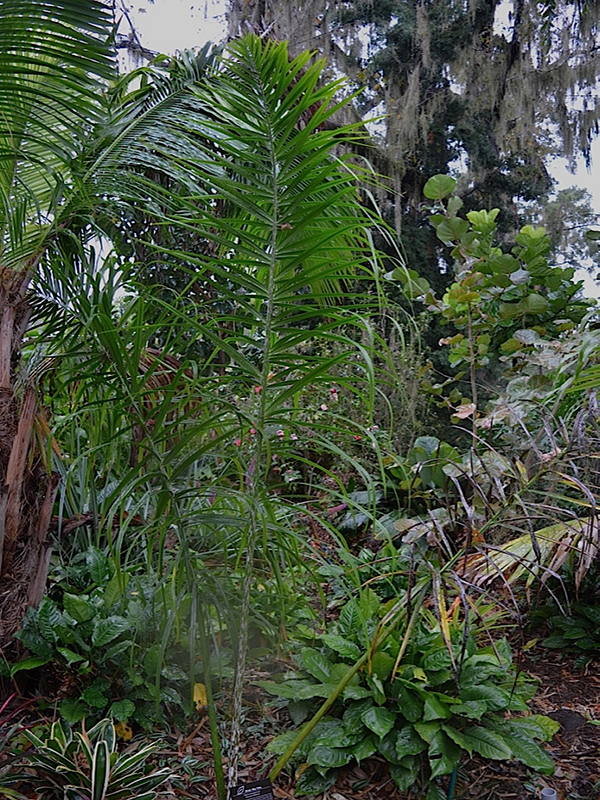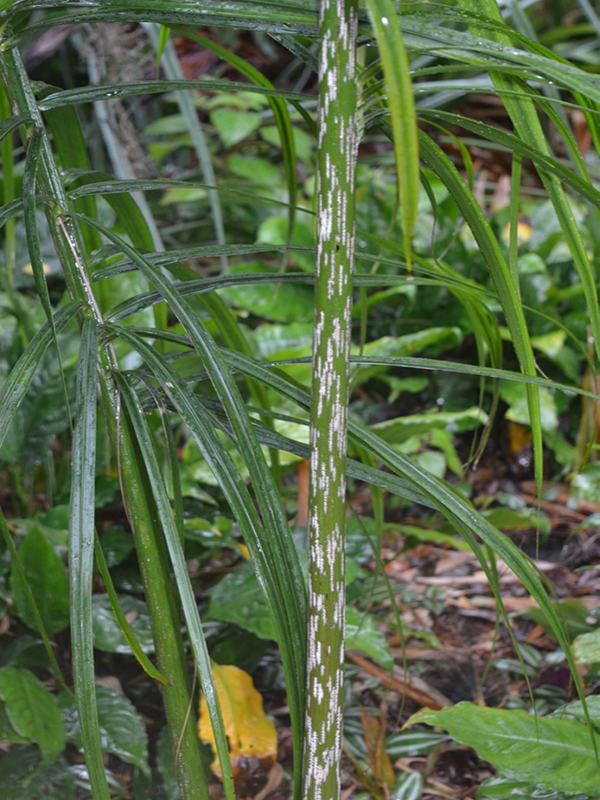Dypsis mananjarensis (Mealy Bug Palm)
Botanical Information
| Family | Arecaceae |
| Genus | Dypsis |
| Species | mananjarensis |
| Synonyms | Chrysalidocarpus fibrosus, Chrysalidocarpus mananjarensis |
| Type | Tree (evergreen) |
| References | Rakotoarinivo, M. & Dransfield, J. 2012. Dypsis mananjarensis. The IUCN Red List of Threatened Species 2012: e.T38545A2875987. http://dx.doi.org/10.2305/IUCN.UK.2012.RLTS.T38545A2875987.en. Downloaded on 26 May 2019. |
| Origin | Native to Africa and eastern Madagascar. |
| Ethnobotanical Uses Disclaimer | The plant is harvested from the wild for various uses, including food, medicine and source of wood and fibre. |
Details
| USDA Hardiness Zone | 10a - 11 |
| USDA Hardiness Ref. | |
| Canadian Hardiness Zone | Requires cold season protection under glass. |
| Canada Hardiness Ref. | |
| RHS Hardiness Zone | H3 - H1c |
| RHS Hardiness Ref. | |
| Temperature (°C) | (-1.1) to above 4.5 |
| Temperature (°F) | 30 - 40 |
| Height | 6 - 25 m |
Description and Growing Information
| General Description | A single-stemmed evergreen feather palm growing from 6 - 25 metres tall. |
| ID Characteristic | The common name “Mealy Bug palm” is due to the waxy scales that cover the stem and petioles. |
| Propagation | By seed. |
| Cultivation | Prefers a position in full sun to light shade, and grows best in a well drained soil. |
| Notable Specimens | Harry P. Leu Gardens, Orlando, Florida, United States of America. |
| Habitat | Moist or dry forest. |
| Bark/Stem Description | A single; 25 -35 cm thick, green and prominently ringed, blue green to lime green with a thin coating of white powder higher on trunk, and topped by a crown of 6 - 10 leaves each up to 350 cm long. |
| Leaf Description | Pinnate, deep green; relatively wide leaflets upright in a deep 'V', but new leaves sometimes reddish. |
| Flower Description | Below crown shaft, very short and thick peduncle, many branched and arching to pendent, 5 cm long and pale yellow in colour. |
| Fruit Description | Spherical, 4 cm or less in diameter and dark green. |

